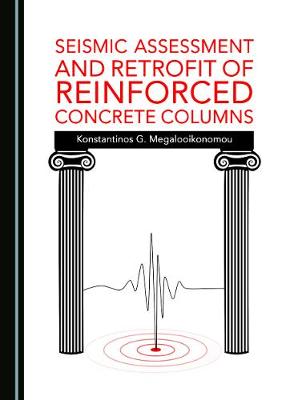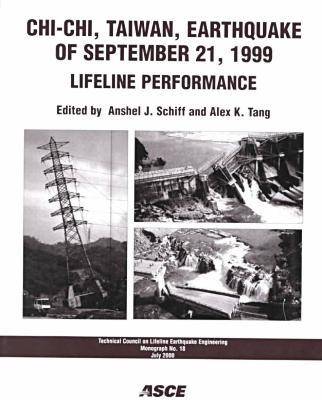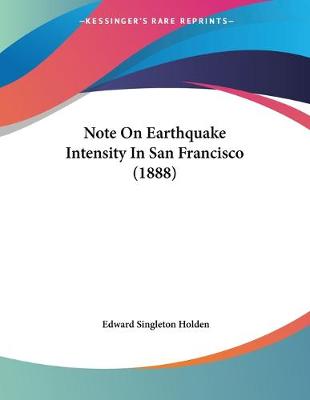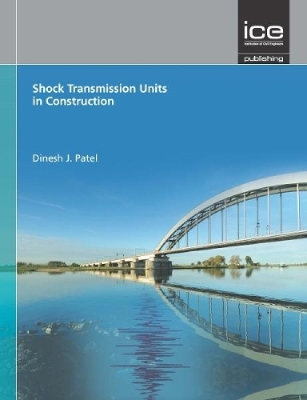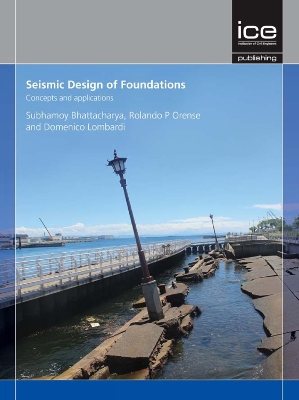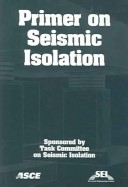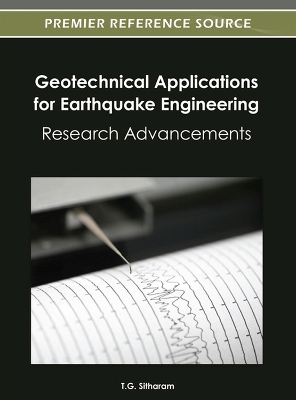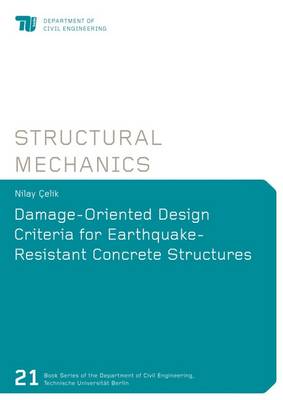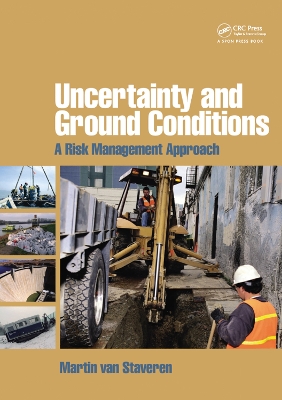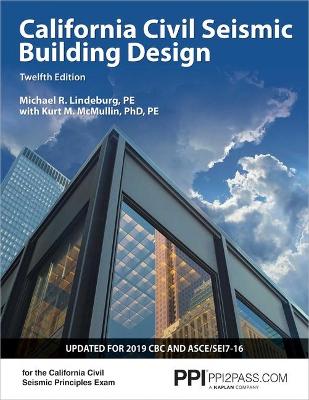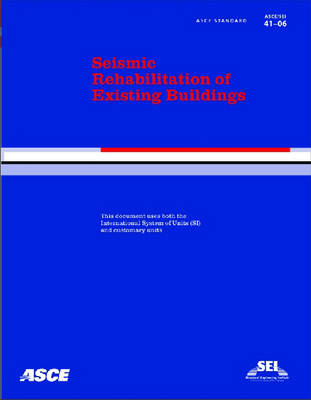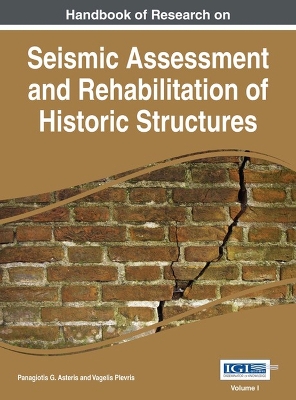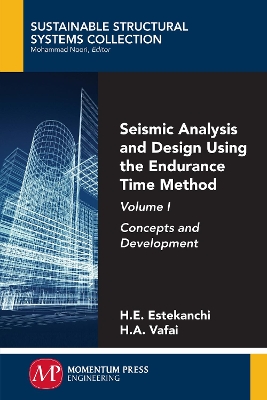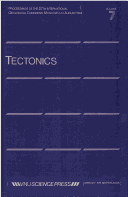Seismic Assessment and Retrofit of Reinforced Concrete Columns
by Konstantinos G. Megalooikonomou
Reinforced concrete columns play a very important role in structural performance. As such, it is essential to apply a suitable analytical tool to estimate their structural behaviour considering all failure mechanisms such as axial, shear, and flexural failures. This book highlights the development of a fiber beam-column element accounting for shear effects and the effect of tension stiffening through reinforcement-to-concrete bond, along with the employment of suitable constitutive material laws...
Seismic Analysis of Safety-Related Nuclear Structures (Standards, ASCE 4-98)
Chi Chi Taiwan Earthquake of September 21, 1999
by Anshel J. Schiff and Alex K. Tang
On September 21, 1999 central Taiwan was struck by a devastating earthquake resulting in over 2400 deaths, thousands of collapsed and severely damaged buildings, and economic losses of over US$20 billion. This book describes the earthquake performance, emergency response, and recovery for the following lifeline systems: electric power, water, wastewater, communications, roads and bridges, railroads, ports, gas, and liquid fuels. In addition, the impact of lifeline disruption on emergency respons...
Note On Earthquake Intensity In San Francisco (1888)
by Edward Singleton Holden
Recent earthquakes in many countries of the world have confirmed the potential for very large seismic events that until now were not forecast. The level of disturbance and destruction of highways and bridges as well as life, suffered during these dominant earthquakes were far greater than structural engineers and their associated design codes had predicted. One important lesson that has been learnt is that it is vital that bridges, which connect major transportation routes, must continue to func...
Seismic Design of Foundations: Concepts and applications
by Subhamoy Bhattacharya
With easy-to-understand explanations of the basic concepts, Seismic Design of Foundations examines recent and worldwide research outputs and post-earthquake reconnaissance case studies and offers practical means of applying them to the real world. Each case study also provides worked examples of new and innovative findings that reveal background information behind the codes of practice in various parts of the world as well as the lessons learned from recent large-scale earthquakes. This book...
Atico, Peru, Mw 8.4 Earthquake of June 23, 2001 (Technical Council on Lifeline Earthquake Engineering Monogra, #23)
Significant Changes to the Seismic Load Provisions of Asce 7-10 (Asce Press)
by Employee S Ghosh, Susan Dowty, and Prabuddha Dasgupta
Primer on Seismic Isolation
This primer describes the current state of seismic isolation technology and highlights issues and concerns which are unique to the design of isolated structures. Readers will rapidly gain practical knowledge related to base isolation design from this concise book. Included are the fundamentals of seismic isolation, design of isolated structures, analysis, and testing. Provided are overviews of the topic that are accessible not only to structural engineers who have not been formally trained in ba...
Geotechnical Applications for Earthquake Engineering
Geotechnical Applications for Earthquake Engineering: Research Advancements has collected chapters from experts from around the world in a variety of applications, frameworks, and methodologies, and prepared them in a form that serves as a handy reference and research guide to practitioners and academics alike. By protecting society with earthquake engineering, the latest research can make the world a safer place.
All civil engineering and construction projects require some sort of solid foundation, but ground conditions bring some degree of uncertainty to every project. Dealing properly with uncertainty over ground conditions can make the difference between the commercial success and failure of a project. With the costs of failing to accurately predict ground conditions becoming increasingly high, the importance of proper management of the variety of ground-related risk is paramount. Risk management has...
RC Frames Under Earthquake Loading
The assessment of the response of reinforced concrete frames to earthquakes is essential in many parts of the world. Therefore, the design and assessment of the structures which are likely to be subjected to such actions require the application of non-linear analysis using finite element techniques of different degrees of complexity. This state-of-the-art report, examines the behaviour of individual frame members subjected to the cyclic actions arising in seismically loaded frames; i.e. slender...
Handbook of Research on Seismic Assessment and Rehabilitation of Historic Structures, Vol 2
by Panagiotis G Asteris
International Collaboration in Lifeline Earthquake Engineering 2016 (Infrastructure Resilience Publication, #1)
Chile Earthquake of 2010 (Technical Council on Lifeline Earthquake Engineering Monogra, #36)
Seismic assessment and earthquake resistant design are essential applications of earthquake engineering for achieving seismic safety for buildings, bridges, infrastructure, and many other components of the built environment. The Endurance Time Method (ETM) is used for seismic analysis of simple and complex structural systems and civil engineering infrastructure as well as producing optimal and cost effective structural and detail designs. ETM is a relatively new approach to seismic assessment an...
ASCE/SEI Standard 41-06, Seismic Rehabilitation of Existing Buildings, is the latest generation of performance-based seismic rehabilitation methodology. This new national consensus standard was developed from the FEMA 356, Prestandard and Commentary for the Seismic Rehabilitation of Buildings, which served as a starting point for the formal standard development process. ASCE/SEI Standard 41-06 represents state-of-the-art knowledge in earthquake engineering and is a valuable tool for the structur...
Traditional methods of geotechnical engineering still dominate the approach of risk and reliability. Following the importance of understanding and asssessing geotechnical hazards, vulnerability and risk, new concepts and techniques of reliability analysis have been developed in the last 20 years. While these are widely accepted, application has been very slow. With a structured approach, this book introduces the reader to basic principles and methods of geotechnical risk and reliability and demo...
Rehabilitation of heritage monuments provides sustainable development and cultural significance to a region. The most sensitive aspect of the refurbishment of existing buildings lies in the renovation and recovery of structural integrity and public safety. The Handbook of Research on Seismic Assessment and Rehabilitation of Historic Structures evaluates developing contributions in the field of earthquake engineering with regards to the analysis and treatment of structural damage inflicted by se...
Seismic Analysis and Design Using the Endurance Time Method, Volume I
by Homayoon Estekanchi and Hassan Vafai
Structural Analysis of Historical Constructions: Anamnesis, Diagnosis, Therapy, Controls
Structural Analysis of Historical Constructions. Anamnesis, diagnosis, therapy, controls contains the papers presented at the 10th International Conference on Structural Analysis of Historical Constructions (SAHC2016, Leuven, Belgium, 13-15 September 2016). The main theme of the book is "Anamnesis, Diagnosis, Therapy, Controls", which emphasizes the importance of all steps of a restoration process in order to obtain a thorough understanding of the structural behaviour of built cultural heritage....
Tectonics
